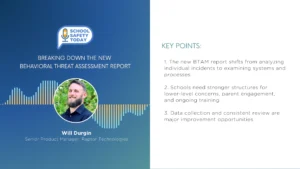Grocery Retailers Need to Adopt Adaptive Supply Chain Strategies to Stabilize Rising Grocery Prices
As recent reports highlight a cooling in overall inflation rates, the grocery sector tells a different story. Over the past three years, grocery prices have surged by 21%, outpacing the general inflation rate of 18% during the same period. This divergence is particularly pronounced in certain food items, where price increases have reached as high as 10%. This ongoing trend in grocery price inflation raises important questions about the dynamics at play in the food retail sector, particularly in the aftermath of the COVID-19 pandemic and amidst geopolitical tensions.
Why, in the face of a supposedly stabilizing economy, are grocery prices continuing to climb?
Dr. Dinesh Gauri shares his perspective on the persistent rise in grocery prices despite cooling inflation trends, drawing from his extensive research in retail and grocery markets. He explores how external shocks, such as global conflicts and pandemic-related disruptions, have fundamentally altered supply dynamics and pricing strategies, emphasizing the need for adaptive supply chain strategies to mitigate such price volatility.
Key takeaways from Dr. Gauri’s insights:
- Unprecedented Price Increases: Since the onset of COVID-19 in early 2020, the grocery industry has seen dramatic changes, with food item costs soaring by approximately 24-25%.
- High Demand Sustains High Prices: Despite the price increases, consumer demand has not waned, buoyed by a growing economy. This high demand enables retailers and companies to maintain profitable margins.
- 2023-2024 Trends: Although some food categories like eggs, cheese, and fish products have seen price reductions, essentials such as baby products, beef, sugar, sweets, and fresh vegetables have experienced price increases ranging from 3% to 9%.
- Supply Chain Disruptions: Ongoing supply chain issues, exacerbated by the COVID-19 pandemic and the conflict between Ukraine and Russia, continue to impact the availability and cost of key staples like wheat and corn.
- Global Impact of Geopolitical Events: The prolonged conflict involving Ukraine, a significant global producer of agricultural products, has had a profound effect on the supply and prices of food globally, underscoring the interconnectedness of global markets and local grocery prices.
Article written by Sonia Gossai









